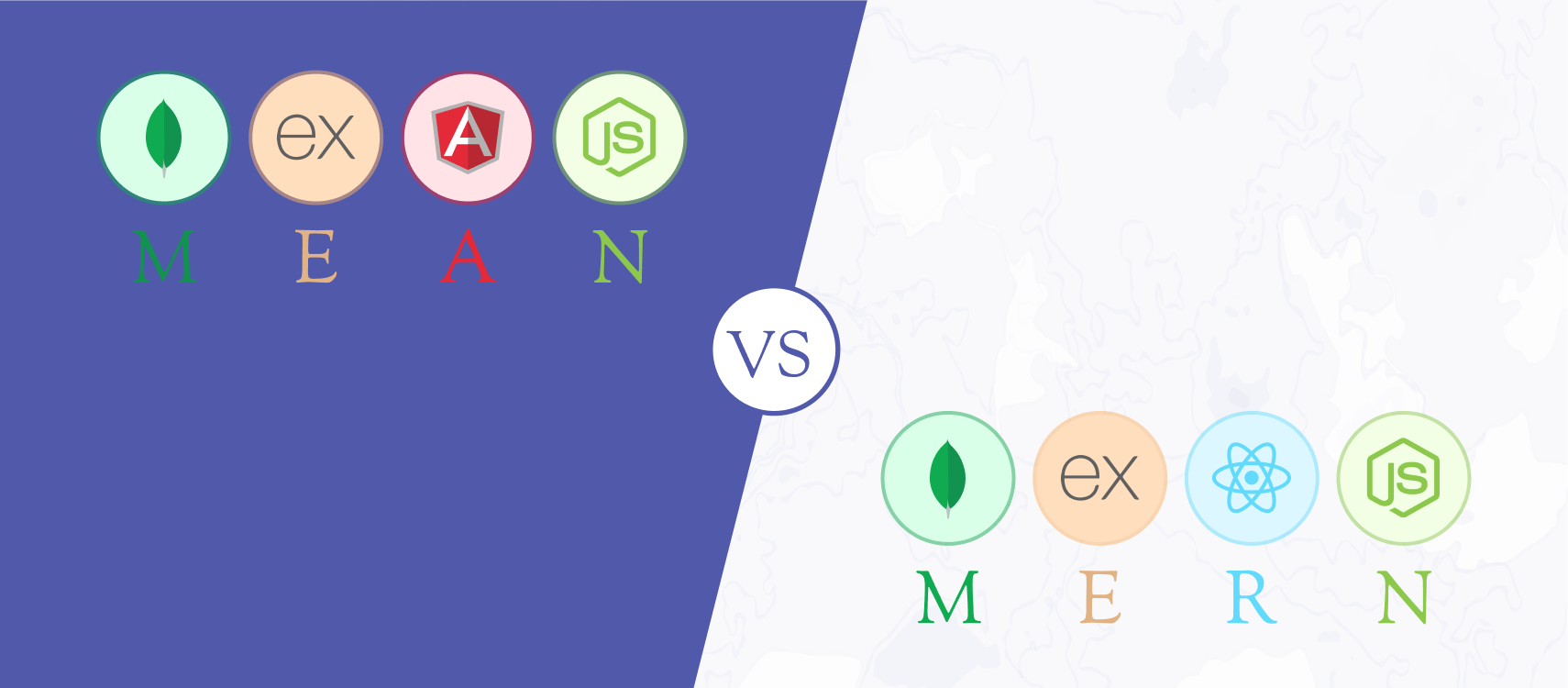Table of Contents
- A Brief Introduction
- Ending Notes
However great an app idea you begin with, it is the development and execution that is primarily responsible to make it come through. Now, building the app needs to consider the technology stack first. In the world of web app development, you have a plethora of technology stacks. But two JavaScript-based stacks continue to enjoy the highest popularity across development projects. Yes, we are referring to MEAN and MERN stacks.
Whether you are a startup or a large enterprise seeking to build or widen your web footprint with a feature-rich and high-performance web app, full-stack development perks a bucketful of advantages. As modern projects prefer to develop incrementally while still testing the market as the updates roll out, full stack development team with smaller team and low overhead cost, just fits their bills.
If you are convinced of the advantages of full-stack development, among the two leading choices such as MEAN and MERN what should you opt for? Well, obviously there is no straightforward answer as there are pros and cons on both sides. In the end, it entirely depends on the nature, size, features and niche of the project. Here we are going to explain the key differences and the advantages of these two tech stacks just to help you make the right choice. Let’s begin by introducing these two technology stacks.
A Brief Introduction to MEAN & MERN Stack
MEAN stack comprises 4 different technologies such as MongoDB for database, ExpressJS for middleware, Angular for frontend and NodeJS for backend. Angular, despite being feature-rich and versatile is comparatively complex and that’s why it is widely preferred by large projects with a fair amount of exception as well.
MERN stack on the other hand comprises MongoDB for database, ExpressJS for middleware, ReactJS for frontend and NodeJS for backend. So, it offers almost the same lineup of technologies except for the frontend where Angular is replaced by ReactJS. React is more component based, modular and straightforward and hence is less complex. No wonder, React is used across both large as well as small projects of diverse niches.
Do you already have some biases for any of these two tech stacks? Hold on, it is too early to make a judgement. Just go through the finer points down below and understand the strengths and weaknesses of each of them in detail.
MEAN vs MERN: Ease of Use and Learning
As we have already mentioned, the MEAN stack because of the Angular frontend is more complex and involves some learning curves. The modularity of React on the other hand makes MERN stack easy for new developers and involves relatively less learning curve. As for community support and documentation, both stacks stand almost equal.
MEAN vs MERN: Rendering Time
MEAN is fully configured and for most of the things MEAN stack developers have built-in functionalities ready at their disposal. Angular also uses native DOM that further helps with quick rendering. So, MEAN stack ensures faster loading time and consistency of performance.
On the other hand, React uses virtual DOM which contributes to the increased rendering time. Often for achieving better performance and loading time, MERN stack developers need to go into configurations and tweak things.
As for rendering and consistency of performance, MEAN stack slightly has an edge over MERN stack.
MEAN vs MERN: Data Binding
Angular with its two-way data binding capability became popular for building dynamic web apps. But this also can lead to performance slowdown at times.
On the other hand, one directional data binding of React can keep things simple, low-footprint and performance focused.
Given the way performance and dynamic features of web apps are balanced by web projects, single dimensional data binding of MERN stack has an edge here.
MEAN vs MERN: Architecture & Code Interpretation
Angular adheres to MVC architecture which encompasses every aspect of communication and rendering between client-side and server-side. This is one reason why MEAN stack remained popular among big enterprise projects.
React on the other hand brings a new approach to this by using JSX or a JavaScript-flavoured HTML code. Ultimately, this helps in reducing the server footprint and allows more flexibility.
Here when we consider architecture and flexibility, both seem to have different but equitable strengths on their side.
MEAN vs MERN: Integration & Modularity
For any versatile tech stack it is important to accommodate third-party libraries and plugins. MEAN stack offers comes equipped with inbuilt HTTP requests and offers server-side functions to allow integrations easily. Without even much programming knowledge, you can complete the basic integration tasks.
Though React is modular in nature, MERN stack developers need to create new settings for integrating 3rd party libraries. So, here for third-party integrations, developers need to go through a few extra steps.
MEAN vs MERN: Time to Market
Faster time to market is a key consideration for staying ahead of the competition and here MEAN stack because of its complexity, learning curve and pre-configured settings take longer time to roll down the project.
MERN stack by using modular attributes such as virtual DOM, one-way Data binding and ready to use components ensures faster build time.
So, for fast paced time to market especially when you go for incremental development, MERN proves to be a better technology stack.
MEAN vs MERN: Vulnerability to Security Threats
Since MEAN stack comes well-equipped with preconfigured security settings and security features like JSON Web Token (JWT), it guarantees higher secure security safeguards against attacks and vulnerabilities. MEAN stack leaves nothing on the third-party APIs or integrations for security.
MERN stack relies heavily on API backend development for safeguarding against security vulnerabilities. Though there are loopholes with the authentication measures of MERN stack, the security measures here doesn’t cause a overload on app performance.
So, for fast paced time to market especially when you go for incremental development, MERN proves to be a better technology stack.
Ending Notes
Sorry, we just cannot say which of the tech stack is better without knowing your project. MEAN stack is still irreplaceable for many projects where real-time features need two-way data binding and MERN stack is the appropriate choice for scalable projects needing to focus on performance and agility. We have just connected the dots to help you decide based upon these differences.










